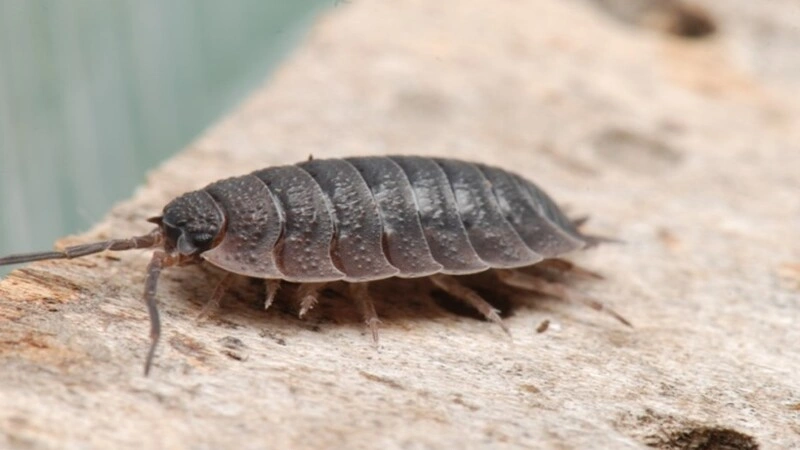Did you know that a distant cousin of crabs and lobsters might be lurking in your home? As surprising as it may seem, woodlice belong to the same family as these marine-shelled creatures. However, instead of thriving in the ocean, they prefer the damp, decaying wood within your home’s structure. In the UK, there are approximately 40 species of woodlice, and some might unexpectedly scurry across your floor when you least expect it. If you’re dealing with a woodlice infestation, you may have come across natural remedies like vinegar and wondered Will Vinegar Kill Woodlice?
Keep reading to uncover the answer.
How to Spot a Woodlice Infestation in Your Home
Woodlice, also known as pill bugs, may not pose a direct threat like some household pests, but when their numbers grow, they can become a nuisance.
These tiny creatures thrive in damp, dark environments, making decaying wood their ideal habitat. If your home has wooden beams, moisture issues, or is an older property, you’re more likely to encounter a woodlice problem.
They often hide in shadowy places such as basements, inside shoes, storage boxes, and even kitchenware like pots and pans. You may also spot them in moisture-prone areas like bathrooms and kitchens, particularly in room corners where humidity levels are high.
Will Vinegar Kill Woodlice?
Vinegar’s natural acidity makes it an effective solution for dealing with woodlice infestations. Its acidic properties disrupt the woodlice’s pH balance, causing dehydration and eventually leading to their demise when used in sufficient quantities.
Beyond its lethal effect, vinegar also serves as a powerful deterrent. Its strong odor repels woodlice, discouraging them from settling in their usual hiding spots. By combining vinegar’s drying effect with its pungent smell, you can naturally reduce and prevent a woodlice problem in your home.
Effective Ways to Use Vinegar to Get Rid of Woodlice
Tackling a woodlice problem doesn’t have to be expensive ordinary distilled white vinegar is a simple yet powerful solution. This household staple is readily available in supermarkets, contains strong acidity, and won’t leave stains on floors or furniture.
To use vinegar effectively, dilute it with water before applying. Grab a clean spray bottle for easy application—fill it halfway with vinegar and top it off with water.
Start by spraying areas where you’ve recently spotted woodlice. Then, treat other potential hiding spots, such as dark, damp corners around the house. Don’t forget to spray behind large appliances, inside cupboards, and at the backs of drawers where woodlice may be lurking.
For best results, keep windows open while applying the solution to ensure proper ventilation and minimize any lingering vinegar odor.
How Often Should You Apply Vinegar?
For the best results, reapply the vinegar solution every two to three days after the initial treatment. Continue this routine until you haven’t seen any woodlice for at least three consecutive days. Regular application ensures that any lingering woodlice is eliminated while also preventing new ones from settling in.
Important Precautions When Using Vinegar
While vinegar is a natural and non-toxic remedy, it’s essential to use it with care, especially around plants, children, and pets. Avoid spraying it on indoor plants, as its acidity can damage leaves and disrupt soil balance. Always store your vinegar solution in a secure cupboard, out of reach of curious children and pets.
Though generally safe, vinegar can cause eye irritation if sprayed too close to the face. Be cautious when applying it, and consider wearing protective eyewear if necessary.
A Simple, Natural Solution for Woodlice Control
Woodlice may be an unwelcome sight in your home, but you don’t need harsh chemicals to manage the problem. So, will vinegar kill woodlice? The answer is yes, it not only repels them but also dehydrates and eliminates them over time.
When to Call in the Professionals
If a woodlice infestation persists despite your efforts, it may be time to seek help from a pest control expert. Professionals have the knowledge, experience, and specialized treatments to eliminate pests quickly and effectively. They can also provide valuable advice on preventing future infestations, ensuring your home remains pest-free.
When DIY methods aren’t enough, consulting a professional is the best way to tackle the problem efficiently and with lasting results.
